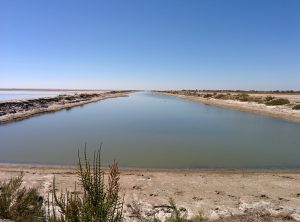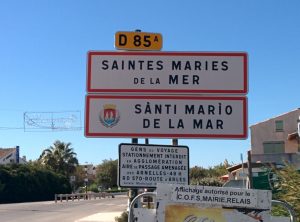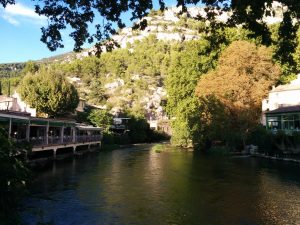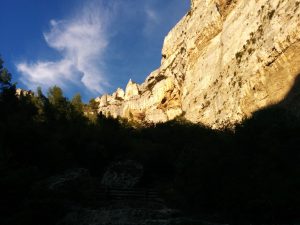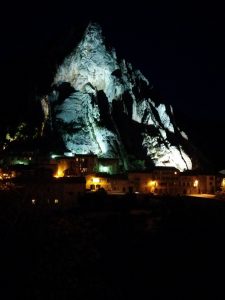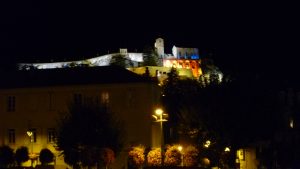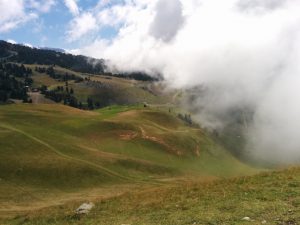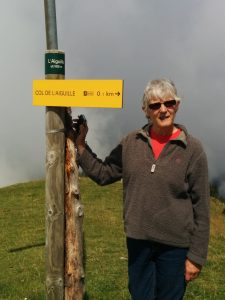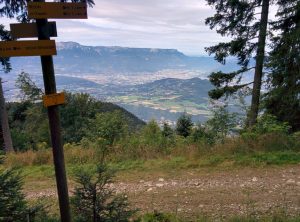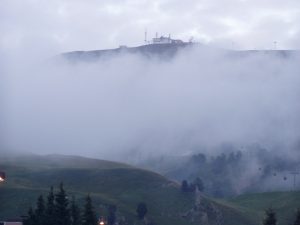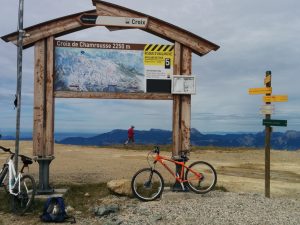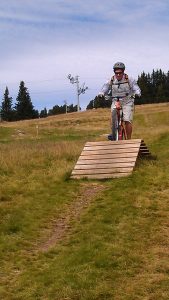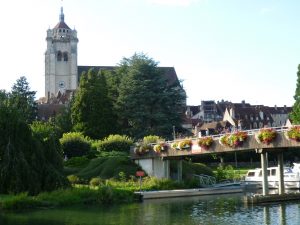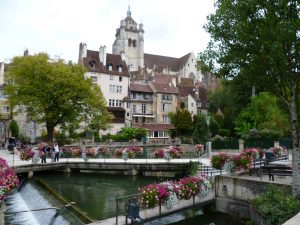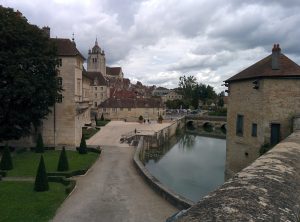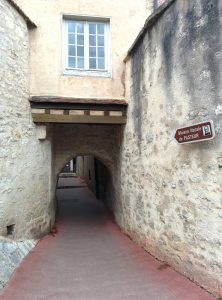This morning – a catastrophe that almost precipitated our immediate return home…
I needed to drive the 2km back down the Aire/beach road back to the entrance where the motorhome service points are in order to drain & refill the water tanks, empty & clean the loo cassette. After waiting for my turn, I did all the necessaries, though did start wondering why it seemed to be taking so long to fill the fresh water tank. After a short while, I became aware of water running from the underside of the van. Hot water, that is. Our water heater/combi boiler was dumping water from the system.
The boiler – clever thing that it is – has a frost-prevention device installed: If the temperature drops below 4 degrees, it dumps the water. It being well over 23 degrees, this shouldn’t have been happening. After a quick panic, I found the heater’s temp sensor (buried under the floor, tucked-away in a slightly inaccessible location, and pulled the switch back out. The place we bought the van had suggested that; just possibly, if you go over a big bump, that could cause the sensor to dump water. Well, the road back was very bumpy, so perhaps that was it?
As the water had been dumped, I thought I’d run some water through the taps just to flush any air out of the system Next problem – taps not working/pump not running. It was at this point, I noticed that the van’s internal electrical system was off. Switching it on at the control panel had zero effect. No electricity = no fridge (no way to ignite the gas burner for it); no water; no loo flush; no ability to charge the phones. Very serious.
Still at the service point and holding up the queue, I tried starting the engine. No problem. Switched on the internal electrics, and on it came. Phew. Carried on filling the water tank and switched engine off. Next thing, water is draining from the boiler again, and all the power is off.
Drastic measures: Fixed a clothes peg around the frost protection switch to hold it in position. Started engine to give me internal power and stop the water draining. Filled the tank and drove back to where Joy was waiting, patiently reserving our place. Parked-up, switched off the engine, and watched the battery voltage monitor show an absurd 15.5V battery voltage (should never go above 14V), rapidly decay to 7V at which point the system shuts down, including the battery monitor! I should mention, this is the NOT the battery for the engine, but is an additional “leisure” battery to allow use of electrical equipment when the engine is not running. Like the water pump, lights, loo, etc.
I started digging around in the (almost inaccessible) cupboard where the leisure battery resides. There’s also a myriad of electronic gubbins in there for split battery charge control (main battery or mains hookup), and for additional circuit protection (fuses) when running from mains or battery. I started tugging at cables in case something was loose. I got the instruction book out for the split charge electronics box: The LED’s were indicating no battery output. So the battery’s died? That was our thinking.
Time for a cup of tea & some breakfast, contemplating how we might get it repaired: We’re a million miles from any garage, French isn’t one of our fluencies and it’s coming up weekend when everything closes. I was on the verge of calling our insurance company to see if they could offer any help, but decided to take another look.
It was then that I noticed the main –ve cable from the battery had a broken crimp at the battery terminal. This was most definitely the cause, but didn’t help our situation. I didn’t bring any electrical tools, cables or other bits with me as I would have needed to pull a trailer for all of it. If only I could find a few scraps of cable I could bind together, I could duck tape them to the end of the main cable & to the battery terminal. This would have been a serious bodge and – if it were to come loose – would start arcing & sparking and possibly worse.

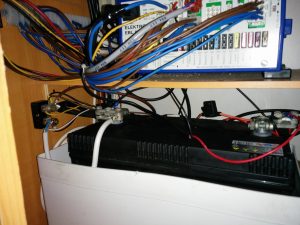
I do have a toolkit – for keeping the bikes in fettle. So I have cutters, screwdrivers, and even a ¼” drive socket set. I also had a spare stainless steel brake cable that I thought I might be able to do something with, when Joy suggested our steel-cored washing line. She then noticed an extension lead I’d knocked-up to go from UK plug to European socket. Never mind the ends, it was a piece of 13A cable. If I could use all three cores in parallel, that would serve 40A more or less, which ought to be enough capacity without danger of frying the cable. Better still, I had the right sized sockets in my socket set to get the battery terminals off.
So, 1 hour later, we have a new temporary cable made up, securely fastened at both ends and were able to get the power back on. And it’s safe.
You cannot believe how worried I was and what a relief it was to get it working again.
On an entirely different note, the wind almost blew enough today to get the board out – that seemingly useless piece of baggage that we’ve trundled all over Europe. One guy was out, but he’d a much larger sail, much larger board, and much smaller body than I; each of which is to his advantage. He also wasn’t going anywhere too fast and soon gave up. The wind forecast is still tantalizingly close to what I need. Let’s see what happens…
